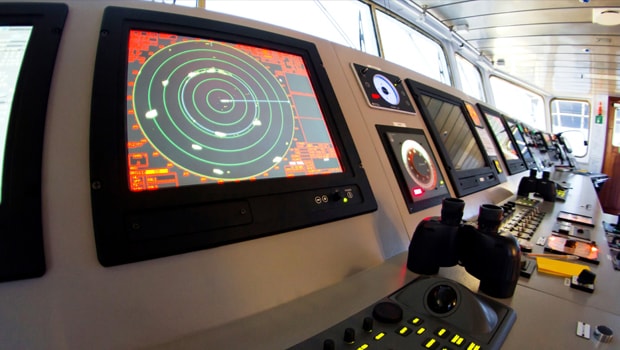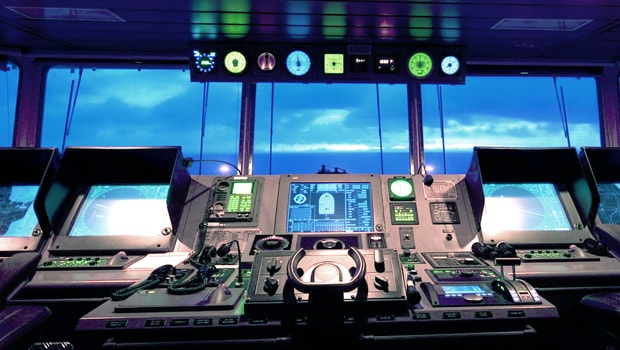
Marine Simulation Integration: Ship’s Bridge Installation
The state of the simulation industry
With the advent of better and more immersive technologies, the usage of simulation for training applications has experienced a marked uptake in recent years. Given the size, cost, availability and risk of the machines often simulated, it is no surprise that significant benefits can be obtained by training in an artificial environment.
The quality of simulation systems has become so realistic that it is now possible for today’s aircraft pilots to perform new craft type training on a zero flight time training basis. This qualifies the pilot to fly the new aircraft, without having any actual seat time.
Marine simulators
The same advances mean the visual and motion table quality of marine simulation can reach the same performance levels as the best flight simulators. The only restrictions now relate to the financial aspects of an application, as opposed to the capabilities of computational hardware. Usage of motion tables and rendering quality is often tailored to specific installations and customer needs, providing greater variation from platform to platform than in other simulation markets.
Differences in ship size, bridge equipment, console design, simulation of equipment, site requirements and many other aspects contribute to comprise what is often a fully bespoke system. Over the course of my career, I have been fortunate enough support the many integrated solutions, including the design and manufacture of a 360 degree modular ship’s bridge simulation room. This allowed the customer to go on-site, install the modular pre-built sections and create an immersive environment where even the entry door closed to complete the ship’s view. Each section and panel, including the displays, was optimised for cost-effectiveness, simplicity of installation and ease of transport, with each light and small enough to be carried through complex access routes and standard doors.

Marine simulators are often more general purpose solutions, capable of being switched between a number of differing ship classes and sizes dependant on the needs of the training centre. Full motion marine simulators are certainly outnumbered, primarily a result of the overall system scale, space required and cost of implementation. For example, the simulation of surface vessels only requires a smaller range of motion to successfully replicate a training situation, and the effect of vibration and rolling seas can be achieved through audio and visual stimulation.
Although it is often preferable to utilise real world controls and consoles to achieve an authentic look and feel, in the marine world this can be impractical. So materials are substituted and console design is representative as opposed to specific – another example of marine simulators being more general purpose solutions. The benefits of a reduced dependency on motion tables and the ability to provide multiple simulations from a single system include greater flexibility on materials, reduced costs, a shorter time to market and less reliance on resources.
Our experience…
At Captec, we understand that for training purposes, installations may need to replicate a range of vessels. Fitment and furniture should also be proportionate, in construction and materials, to the training application rather than a replication of the real articles.
Our work and experience with numerous simulation companies means we understand the needs of simulators, their suppliers and their operational life. We can maximise the reliability of hardware, ensuring it operates to maximum performance levels, provides the life required and allows the speed of service and maintenance needed for successful operation.

We understand the need for technology refreshes as well as the pressure to operate for as long as practically possible to minimise through-life costs. We manage materials obsolescence, track manufacturer roadmaps and support third party hardware far beyond manufacturer warranties. Our experience in defence, marine, flight, medical, rail, automation and many other sectors ensures we are able to take holistic views of projects, predict potential pitfalls and mitigate risks.
To say we are experienced in rack and computer integration would be something of an understatement. We work with a number of tier one simulator providers to ensure the hardware platforms they need are built on time, provide the performance and reliability required, and are also future proofed to minimise the impact of technology refreshes. Our work doesn’t stop there either. We provide warranty and out-of-warranty support, repair and replacement for our not only our own equipment, but also legacy and third party as part of both UK and global support programmes.
Find out more about our rack integration capabilities here. Or, if you’re short on time, click here to watch the video!

